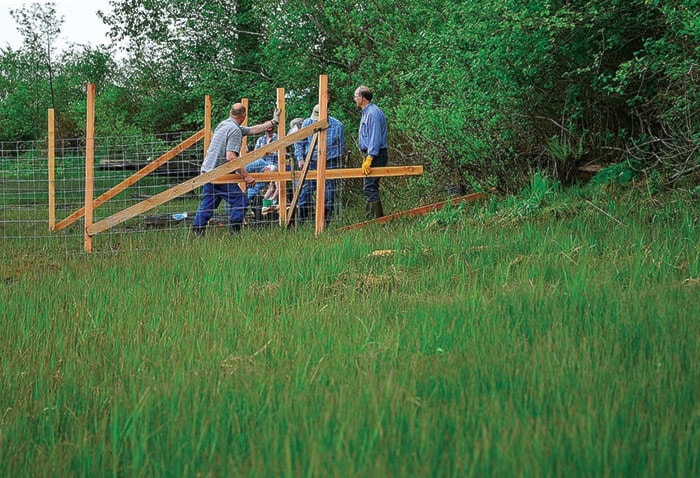The sounds of hammers banging was punctuated by the squelching of rubber boots on Friday.
The action was coming from the muddy shoreline of Baikie Island Nature Reserve where a group of volunteers were building a goose fence enclosure. It's actually called an "exclosure" because it creates a section of the foreshore where Canada geese can't get into and will serve as a control section so biologists can see how much damage the geese are doing to vegetation along the shore.
"Today we're working on an exclosure which is basically a fenced area where we can keep Canada geese out," said Cynthia Bendickson, a biologist and volunteer on the project, "and the reason we want to do this is because there's been a lot of concern raised lately about the amount of Canada geese who are in the estuary, particularly in the summer months."
The geese are an introduced species being bred and released on the coast in the 1970s and 1980s to create a game animal to be hunted. The breeding program worked "almost too well," Bendickson said, because they've become a nuisance, particularly in large urban areas of Vancouver and Victoria in parks, agricultural areas and airports. They're not a problem to that extent in Campbell River yet.
"But we're worried it might get there," she said.
A group of volunteers loosely associated with the Campbell River Environmental Council decided to test the impact goose grazing is having on the estuary.
"We've definitely seen them eating sedges down here which is partly what this exclosure is set up to measure but I have also seen them eating eel grass," Bendickson said.
The sedges are, of course, are important to salmon rearing and the health of the estuary. The rotting vegetation feeds insects that, in turn, feed salmon coming up the river.
Bendickson has been doing informal weekly counts of geese since last year and she has seen over 1,000 geese at times in the estuary.
"And that's a huge amount of geese for such a small estuary," she said.
The exclosure is being built in such a way that it won't trap fish or any other animals but there will be a sign on it that includes a phone number for the public to call should they see anything trapped inside.
All the work is being done by volunteers and the fencing has been bought with a $500 grant from Fisheries and Oceans Canada as well as contributions from groups down-Island doing similar tests.
